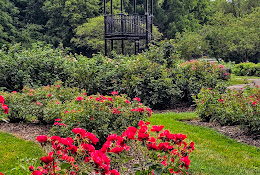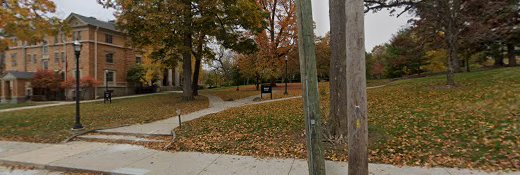
Park of Roses Shelter House
Mục lục 1 Overview & History 1 A Haven of Roses 2 Visitor Experiences 1...
Seeking a tranquil escape into nature? Look no further than Adena Brook Rain Garden, a beautifully designed space that offers a refreshing oasis. This garden provides a unique opportunity to experience the beauty of ecological design and discover how nature can be harnessed to create a sustainable and visually stunning environment.
Adena Brook Rain Garden stands as a testament to innovative landscape architecture and environmentally conscious design. While specific historical details may vary, the overarching vision behind rain gardens is to manage stormwater runoff effectively and beautify the surrounding area. They are designed to capture rainwater, filter pollutants, and replenish groundwater supplies, making them a valuable asset to any community. Rain gardens often showcase native plant species, providing habitats for local wildlife and promoting biodiversity.
The creation of a rain garden is driven by a desire to mitigate the impact of urbanization on natural ecosystems. Impervious surfaces like roads and buildings prevent rainwater from naturally seeping into the ground, leading to increased runoff, erosion, and pollution. Rain gardens offer a natural solution by creating depressions in the landscape that allow rainwater to infiltrate the soil slowly. This process helps to reduce flooding, improve water quality, and create a healthier environment for both humans and wildlife.
Visitors to Adena Brook Rain Garden often comment on its serene and calming atmosphere. The gentle sounds of water trickling through the garden, the vibrant colors of the flowers, and the buzzing of pollinators create a sensory-rich experience that is both relaxing and educational. The garden offers a welcome respite from the hustle and bustle of daily life, providing a space for quiet contemplation and connection with nature.
Rain gardens offer a unique opportunity to learn about environmental stewardship and sustainable landscape practices. Informational signs and guided tours (when available) can provide insights into the ecological benefits of rain gardens, the types of plants that thrive in these environments, and the simple steps that individuals can take to create their own rain gardens at home. Observing the garden’s ecosystem in action is a fantastic learning experience for visitors of all ages.
The design of Adena Brook Rain Garden carefully selects plant species based on their ability to thrive in wet and dry conditions, as well as their aesthetic appeal. Native plants are often favored because they are well-adapted to the local climate and require minimal maintenance. These plants attract pollinators like bees and butterflies, further enhancing the garden’s ecological value. The specific plants used can vary, but common examples include colorful wildflowers, grasses, and shrubs that provide year-round interest.
The key feature of any rain garden is its ability to capture and filter stormwater runoff. This is achieved through a carefully engineered depression in the landscape that is designed to collect rainwater. The soil within the rain garden is typically amended with organic matter to improve its drainage capacity and filtration capabilities. A layer of mulch helps to retain moisture and suppress weed growth. The overall design is intended to mimic natural hydrological processes and create a self-sustaining ecosystem.
The best time to visit Adena Brook Rain Garden depends on your personal preferences and what you hope to see. Spring is a wonderful time to witness the garden come to life with vibrant blooms and the return of migratory birds. Summer offers lush greenery and an abundance of pollinators. Fall provides a tapestry of colors as the leaves change. Even in winter, the garden can be beautiful in its own way, with the stark outlines of plants against a snowy backdrop.
Before visiting, it’s always a good idea to check the weather forecast. Rain gardens are designed to handle wet conditions, but heavy rain may make some areas inaccessible. Conversely, during periods of drought, the garden may appear less lush than usual. Regardless of the weather, the garden offers something to appreciate year-round.
Consider accessibility when planning a visit. Many rain gardens are designed to be accessible to people of all abilities, but it’s always a good idea to check beforehand. Also, confirm the availability of restrooms, seating areas, and other amenities that may enhance your experience.
When visiting Adena Brook Rain Garden, it’s important to be mindful of the environment. Stay on designated paths, avoid picking flowers or disturbing plants, and pack out any trash. By following these simple guidelines, you can help to preserve the garden’s beauty and ecological integrity for future generations. To learn more about the garden, you can check out its website (if available).

Mục lục 1 Overview & History 1 A Haven of Roses 2 Visitor Experiences 1...

Mục lục 1 Overview & History 1 A Legacy of Learning and Landscape 2 Visitor...

Mục lục 1 Overview & History 1 A Garden Dedicated to Hostas 2 Visitor Experiences...

Mục lục 1 Overview & History 1 A Local Horticultural Haven 2 Commitment to Quality...
Category with many best articles